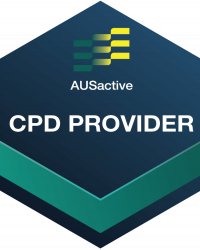Reformer Repertoire
Forward Facing Arm Work:
Offering
Alternate Names
Seated Arm Work series, Front Rowing exercises, Dumb Waiter
Derived From
Classical Reformer: Arm Circles
Primary Element
Strength
Why for Primary?
To strengthen the shoulder flexors, in particular Anterior and Middle Deltoids against gravity and the spring resistance to reach the arms up and forward as well as abduct or reach the arms outwards, and eccentrically to control the movement of the arms back and inwards.
Secondary Element
Stability
Why for Secondary?
To create and develop torso and scapula stabilisation.
Tertiary Element
N/A
Why Tertiary?
N/A
Repetitions
8-10
Apparatus Setup
Suggested springs
- Number system: 1 spring
- Colour system: 1 x red spring
- Resistance: light to medium
Foam padding may be used underneath the knees to create a more comfortable position, or the exercise can be performed sitting on a Pilates box, or with the legs crossed or extended if kneeling is contraindicated or creates pain.
Plane of Motion
Sagittal
Targeted Muscles
The shoulder flexors are working to overcome gravity and the spring resistance and raise the arms up and outwards, with the elbow extensors helping to reach the arms forward
Shoulder flexors
- Anterior and Middle Deltoids
- Pectoralis Major
- Biceps Brachii
Elbow extensors
- Triceps brachii
- Anconeus
Posterior Deltoids perform the shoulder extension movement or bringing the arms back down and are likely activated here, however Anterior and Middle Deltoids are still working eccentrically against gravity and the pull of the ropes to draw the arms back in with control.
Warnings
This exercise may be unsuitable for clients where kneeling is contraindicated or creates pain. It can be done sitting on a Pilates box, or sitting with the legs crossed or extended.
The exercise may be difficult for clients who present with tight chests or pectoralis muscles. Pectoralis release work or stretches may be beneficial before this exercise to assist with activation and range of motion. A short or tight Pectoralis Minor muscle may restrict shoulder flexion by limiting scapula movement and rotation.
Execution
Kneel upright on the Reformer carriage facing the foot bar with the tops of the feet on the head rest and the back of the pelvis against the shoulder blocks. Place the thumbs into the short straps with palms facing up. Bend the elbows behind the waist, aiming to stay open through the chest and avoid internally rotating the shoulders.
Exhale to shrug the shoulders up and back, before reaching the arms forward on a slight upward diagonal line. Maintain the connection between the shoulder blades and only extend the arms so far as you can maintain the shoulder positioning. Inhale to open the arms to a ‘V’ position or where you can still see the arms in your periphery vision, exhale to draw the arms back through center and inhale to bend the elbows returning to the starting position with control.
Observations
Do a body scan of the client taking note of the following points
- Head and Neck
- Is the back of the neck long and crease free? A slight retraction of the neck with the chin tucked can help avoid straining the neck forward and up as the arms reach forward and outwards
- Pelvis
- Are the hip bones even horizontally or is the client leaning to one side?
- Is the client about to keep a posterior tilt throughout with engagement of the abdominals?
- Arms
- Are the shoulders lifted up and back before the movement of reaching forwards?
- Can the client maintain the connection between the shoulder blades and identify when to stop reaching the arms forwards? I.e. when they lose the shoulder stability and connection
- Can the client draw the arms in and backwards with control against gravity without puffing the chest forwards, internally rotating the shoulders and activating or gripping down into the latissimus dorsi muscles?
- Legs
- Are the legs relaxed and in a comfortable seated position?
Learning Style Technique Cues
Auditory – word associations that connect mind and body
- Engage the transverse abdominis before moving, anchoring the sit bones down
- Bias the pelvis towards a slight posterior tilt in order that you can avoid extending or arching the lumbar spine
- Say the client’s name when you’re about to interact with them
Visual
- Imagine a foam roller behind your spine, hug the shoulder blades around the foam roller and keep the back of the head connected to the foam roller as you reach the arms forward
- Imagine a balloon or small Pilates ball under the armpits as you open the arms outwards and back in again to avoid jamming or locking down on the return phase of the movement
- Imagine the ballet arm position ‘Second Position’ with the chest open and the elbows soft throughout the movement
- You may demonstrate a part of the movement as a visual representation for the client to see
Kinaesthetic
- Feel the co-contraction of the abdominal muscle and the back extensors to create a stable torso from which to move from
- Feel the shoulders lifting up and back to start the movement
Modifications and Variations
Regress the exercise by
- Reducing the spring setting to one blue spring
- Reduce the repetitions and/or pace
- Working on the movement but with 0.5kg hand weights or no weights to create the pattern before adding load
- Stretching the chest and Pectoralis muscles to increase range of motion through the shoulders before attempting the exercise
- Working on Forward Facing Arm Work: Reaching Forward
Progress the exercise by
- Increasing the repetitions and/or pace
- Increasing the spring setting to one blue spring and one red spring
- Increase the range of motion or how far the arms are reaching forward and outwards, but keep the shoulder connection throughout
- Sit on a less stable surface, for example a foam roller, yoga bolster or lift up into a high kneeling position with the feet against the shoulder blocks to create instability
- Progress into Forward Facing Arm Work: Hug-A-Tree
Series and Transitions
This exercise is part of the Forward Facing Arm Work series which includes a range of other exercises in the fundamental repertoire. The Forward Facing Arm Work series can also be found in the Cadillac repertoire, or performed on a mat using hand weights or a resistance band looped behind the waist.
Transition to Forward Facing Arm Work: Hug-A-Tree by drawing the arms back to the start position, lifting them up to shoulder height with the palms facing inwards and elbows softly bent ready for Forward Facing Arm Work: Hug-A-Tree.
Inspired Academy follows the order to create strength in more straightforward movements before adding complexity
Fundamental repertoire

